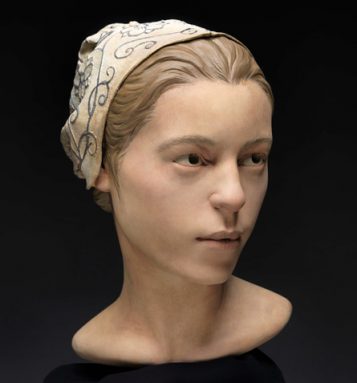American cannibals
Skull fragment suggests starving colonists may have eaten one of their own
Share this:
- Share via email (Opens in new window) Email
- Click to share on Facebook (Opens in new window) Facebook
- Click to share on X (Opens in new window) X
- Click to share on Pinterest (Opens in new window) Pinterest
- Click to share on Reddit (Opens in new window) Reddit
- Share to Google Classroom (Opens in new window) Google Classroom
- Click to print (Opens in new window) Print

Skeletal remains of a Jamestown teen show signs of cannibalism in colonial America, new data show. The girl’s skull provides the first concrete support for historical accounts that some starving colonists had resorted to eating the flesh of others.
Jamestown was the first permanent English settlement in the Americas. It sat on the James River, in what is now Virginia. The winter of 1609 to 1610 was hard on people living there. Some became gravely sick. Others starved. Only 60 of the 300 residents made it through the season. Historical accounts tell of people attempting to hang on by eating horses, dogs, rats, snakes, boiled boots — and other people.
Last summer, researchers unearthed part of a skull that belonged to a girl from that time. The scientists studying the remains nicknamed her Jane. In a study released May 1, scientists report evidence that her flesh was removed after death.
And her body probably wasn’t the only one butchered by starving settlers.
“We don’t think Jane was alone in being cannibalized at Jamestown,” said historian James Horn. He studies colonial America and works at the Colonial Williamsburg Foundation in Virginia. Colonial America refers to a period that began with European settlements in the 1500s.
Researchers unearthed Jane’s partial skull in a cellar from Jamestown’s earliest days. The cellar also contained one of her shinbones, as well as seashells, pots and the remains of animals.
Archaeologist William Kelso, of the Jamestown Rediscovery Archaeological Project, made the discovery. When he observed that someone had apparently chopped the skull in two, Kelso contacted Douglas Owsley. He’s an anthropologist with the Smithsonian Institution in Washington, D.C.
Owsley led the study of Jane’s skull and shinbone. His team found cuts in the girl’s skull made after death. Her brain had been removed, as had other tissues.
The cut marks show “the person who did this was very hesitant and had no experience at this type of activity,” Owsley said at a press conference.
The scientists could not determine how Jane died. It may have been disease or starvation. Horn told Science News that the girl probably arrived in Jamestown in 1609 aboard one of six ships from England. Most food on those supply ships had spoiled before reaching Jamestown.
Though Jane’s life ended when she was only about 14, researchers have attempted to figure out what the ill-fated teen likely looked like when still healthy. They took X-ray images of her skull and produced a 3-D reconstruction from them. Artists then helped create a sculpture of her head and face. It will now go on display at the Archaearium at the Historic Jamestowne site.
Power Words
cannibal A person or animal that eats members of its own species.
colonial An area under full or partial control of another country, typically far away.
anthropology The study of humankind.
archaeology The study of human history and prehistory through the excavation of sites and the analysis of artifacts and other physical remains.







